“Masks”, “flanks”, “practicable”, “butec”, “hinge on the nail”, “counter-venting”, I have a lexicon in formation in my field notebook, gathered from the first day of the workshop. On the way to the warehouse, on the second day of the workshop, Ilinca, one of the participants of the Recycling Workshop, patiently answers my questions about the terms of her trade, especially those related to the main object used in the workshop – the practicable, also called “masked”.
After the previous day’s tour through the warehouse with the theater’s machinists, Gabi Albu, the architect who runs the workshop, and the 5 participants, Ilinca, Briana, Tavita, Cristi, and Horia (students and young scenographers), chose to work with the wooden practicables and recycle them into materials for the furniture-installations that will be assembled in the Masca garden.
Why practicables?
The stage prop is a very versatile piece in set design, as it can be assembled in different configurations – either a raised platform on stage that demarcates a different space in the set, or a flank that conceals spaces or objects to be hidden, whether gates, doors, or decorative vaults, and many others. The practicals used in the workshop are like large rectangular wooden frames, but shapes and materials can vary. The basic idea is to have a modular, stable but lightweight piece that can be tightened and extended as needed.
The modularity of this piece is what makes it essential in its role on stage but also perfectly suited for the recycling process.
As I said in another post here on the blog, recycling involves more labor, more time dedicated to the process and the benefits may seem vague at first. Through the Recycling Workshop, Masca seeks to illustrate not only the technical side of the process of reusing materials but also to outline a collaborative model that reinforces sustainability from both an ecological and community standpoint. The idea of a “helix” underlying the Helix project for Masca – a cultural and community center involves on a conceptual and practical level the collaboration between different actors active in the public space (community members, research and education sphere, local administrations, business sphere). An essential aspect to make the helix model work is that the collaboration exercise is replicated at each level of interaction. The Recycling Workshop is experimenting with this by bringing together student scenographers or recent graduates in scenography, an architect, theater machinists, researchers.
How do you recycle, practically speaking?
Once the approach was decided – the reuse of practicables as installation materials in the Masca garden, everyone got to work. After a run through the principles of safe working,
Mr. Adi and Mr. Vasile, the stagehands, brought around 15-20 practicables from the room with sets to the empty room where Gabi and the 5 student scenographers had set up the workspace.

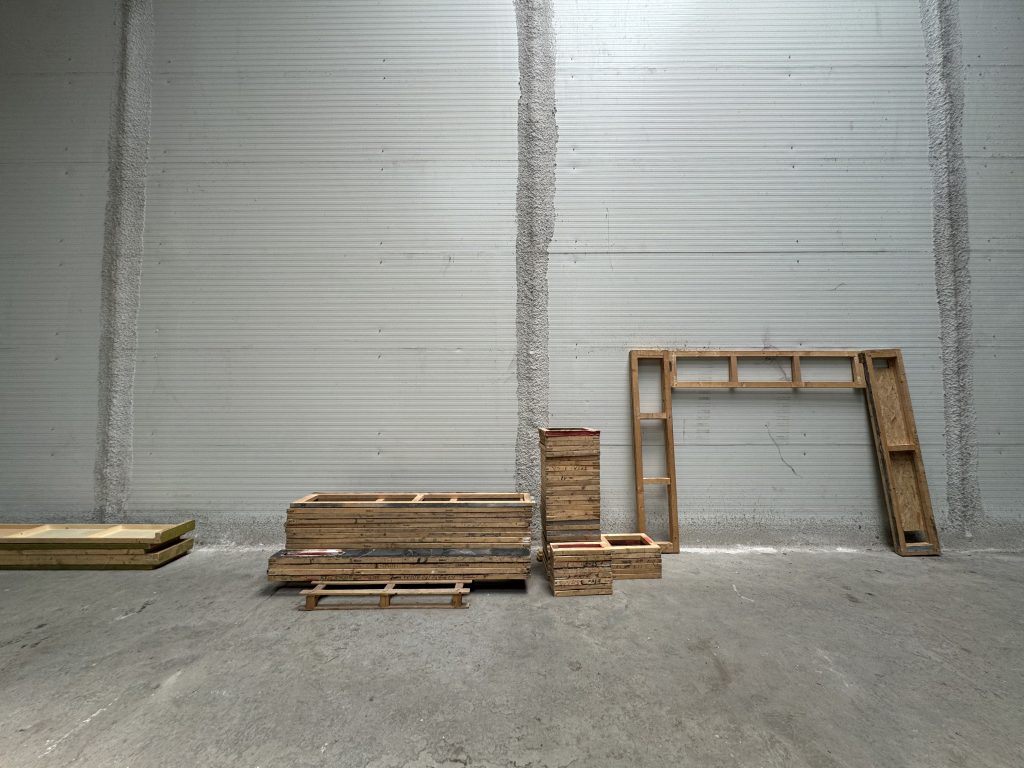
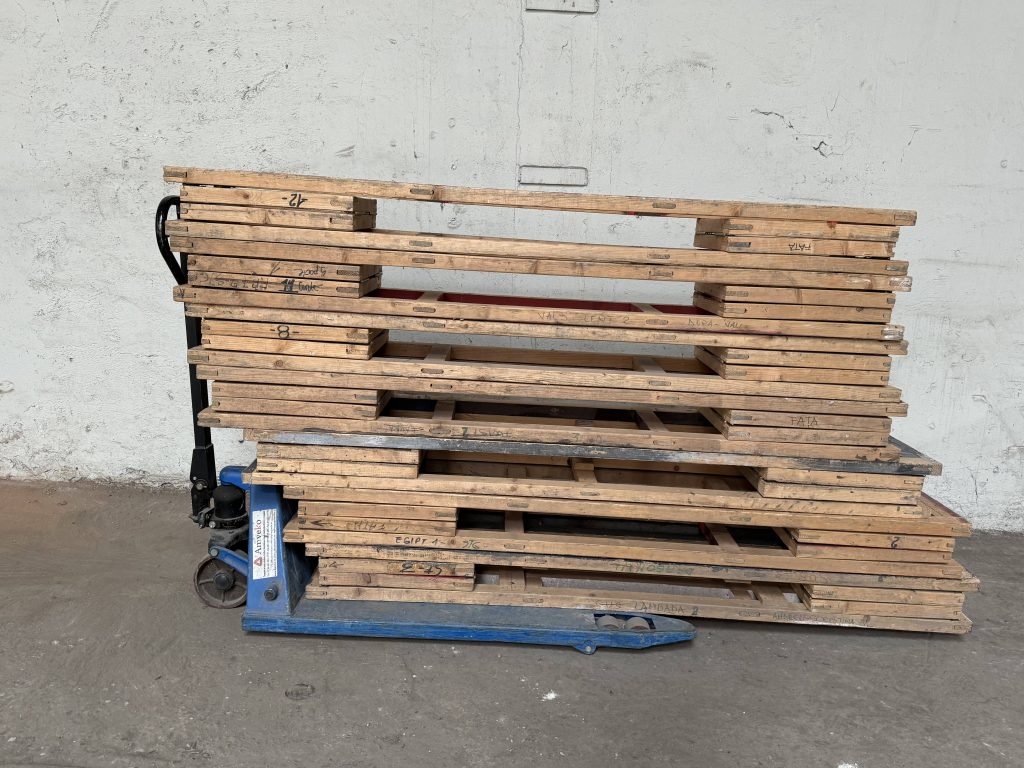
Gabi and the students start with the disassembly of the vestibule; they all climb the vestibule onto the workbench and quickly begin unscrewing the hinges and separating the components into categories.
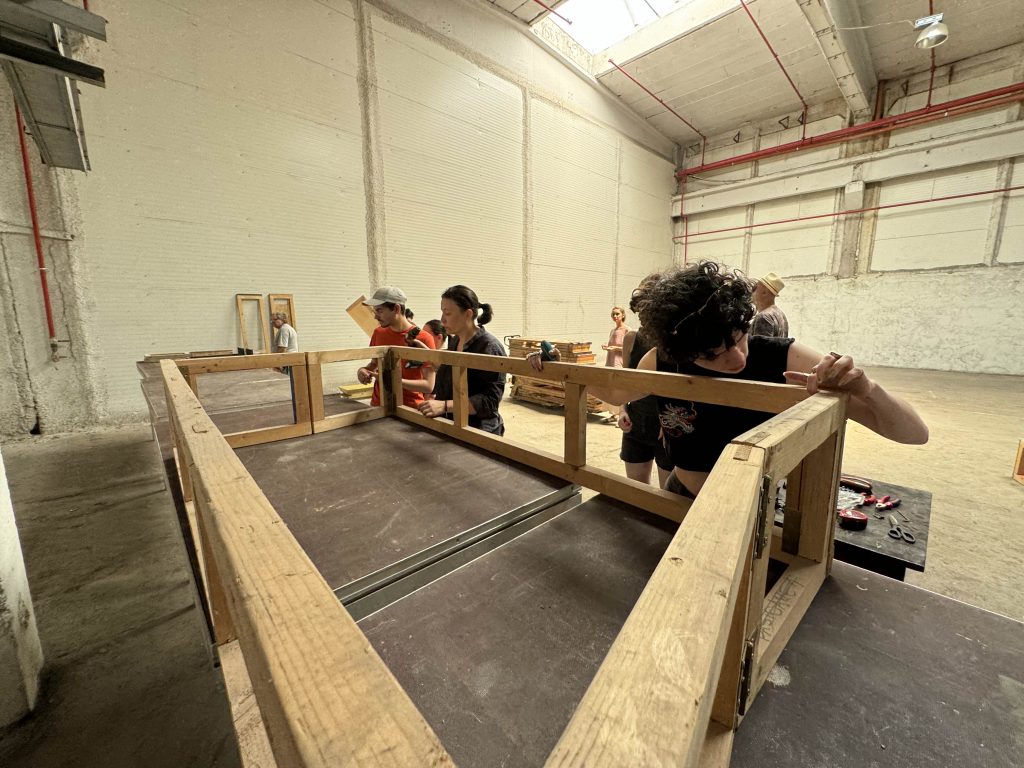
Long sides in one place, short sides in another, fixed hinges, nail hinges (which can be opened by removing the nail), short screws, long screws… a few piles of parts quickly appear, and just as quickly a few sorting containers, built by the 6 in turn from materials in the warehouse – two drawers, some cardboard, tape.
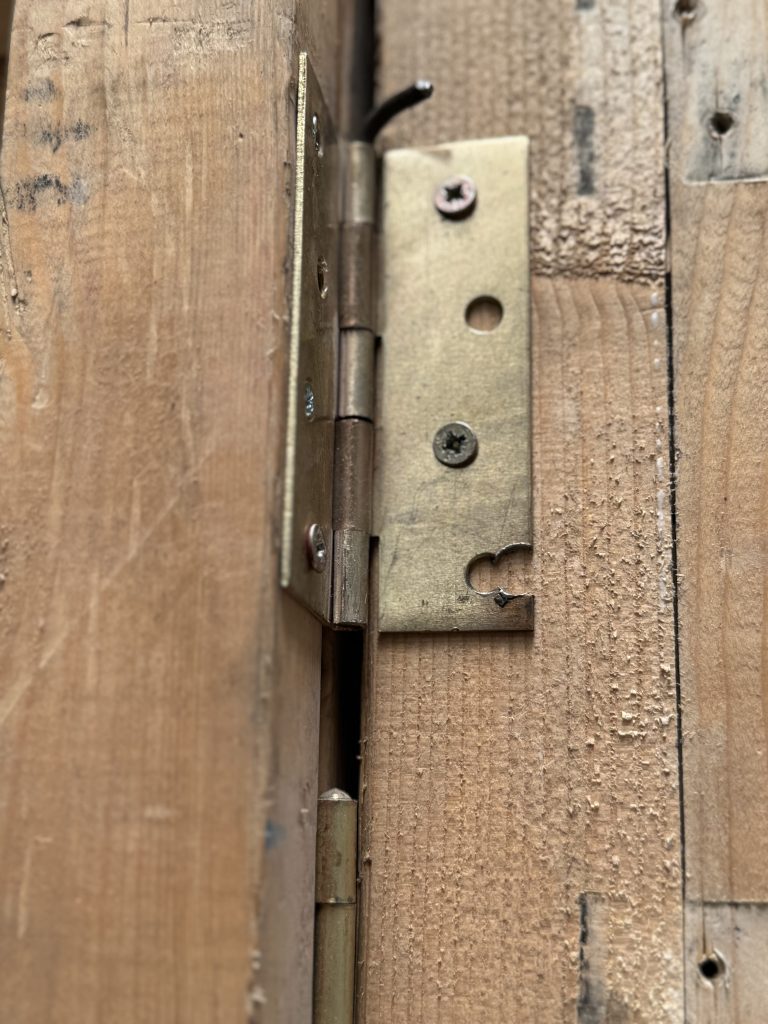
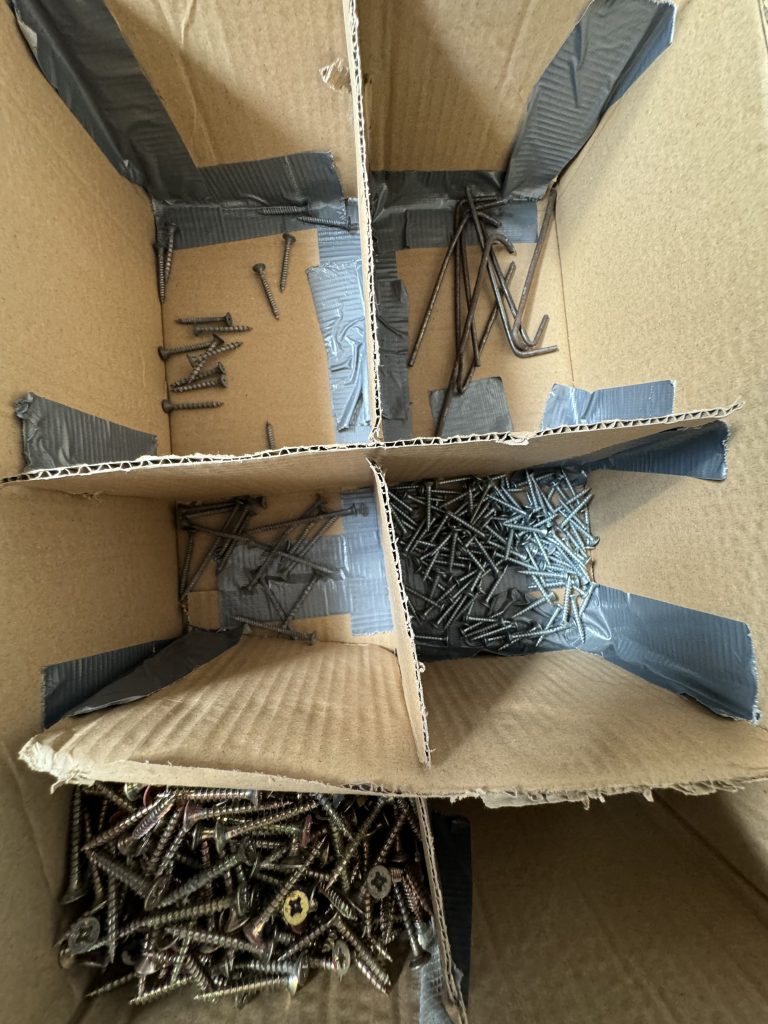
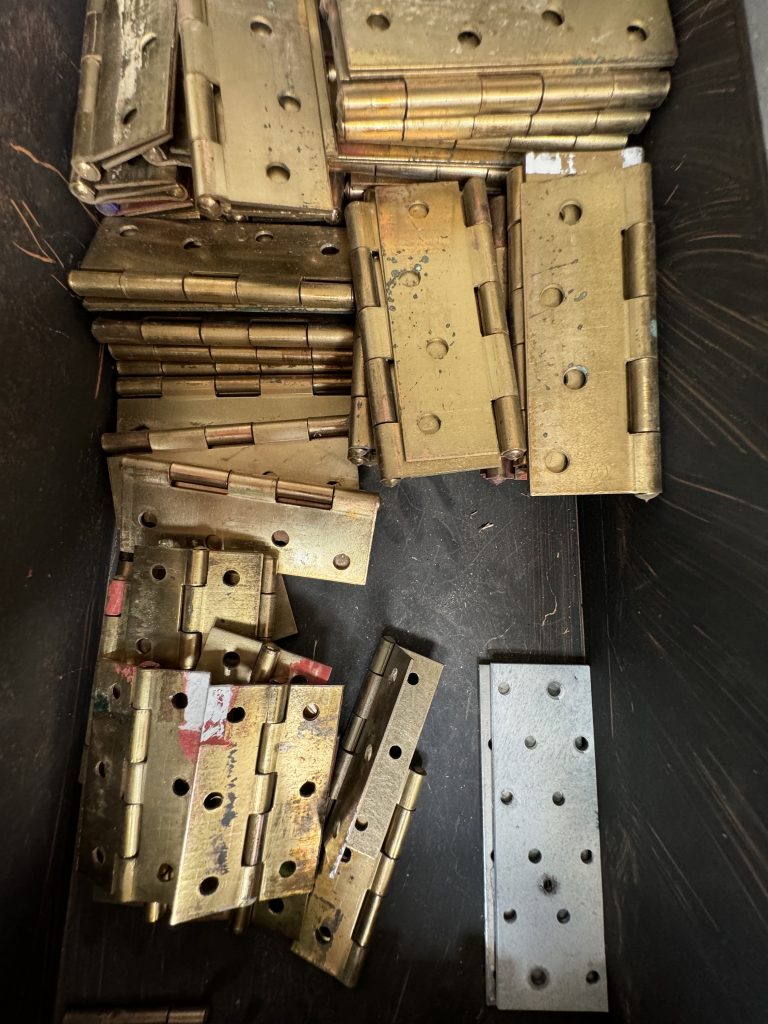
The sorting, useful, of course, to keep everything in order and to make the next steps of construction easier, brings out something easy to overlook – the cumulative cost of parts; small parts, a hinge, a bolt, have a small individual cost, but the dozens or even hundreds of parts recovered from disassembly, sorting and storage bring with them significant sums. The exercise helps the students at the same time because it makes another element of their job, budgeting, concrete, training them not to underestimate the costs that come with small but numerous parts.
With the parts organized by category, measurements follow. The long and short sides of the practicables will be integrated into the design of the furniture-installations in the size they are. In turn, each participant measures or writes down the dimensions taken by the others, in an exercise that Gabi uses as a moment of inventory and learning at the same time. Measure once, measure again for safety; count the pieces once, count again to make sure each student has the materials they need for the design ideas they will be working on.
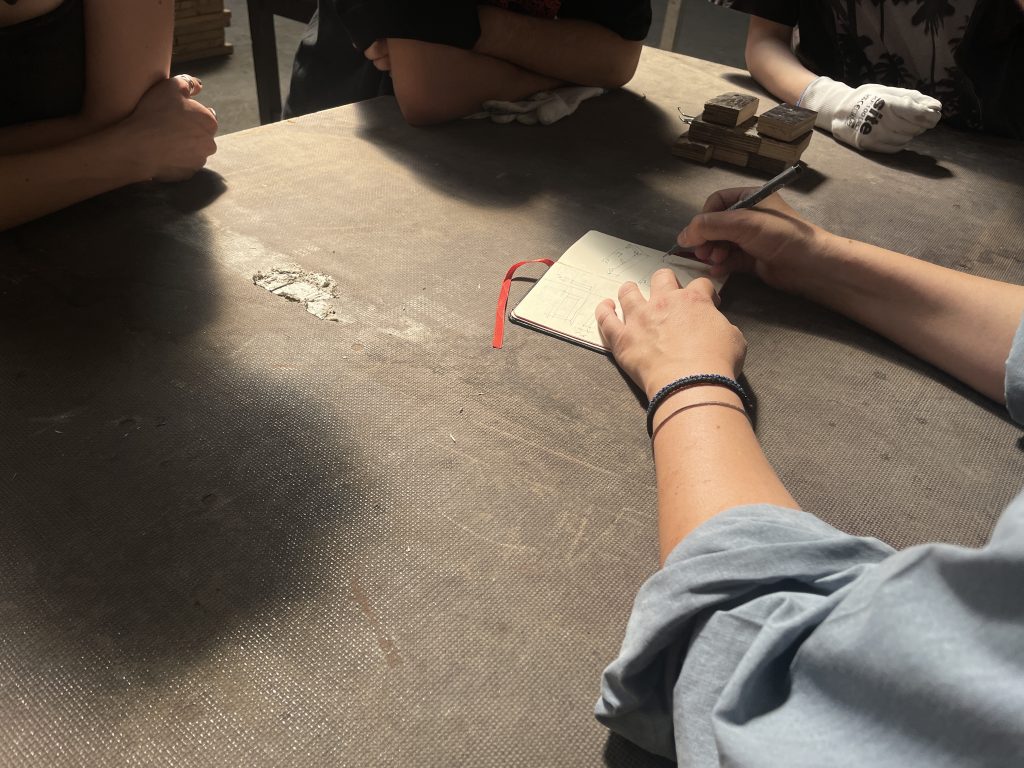
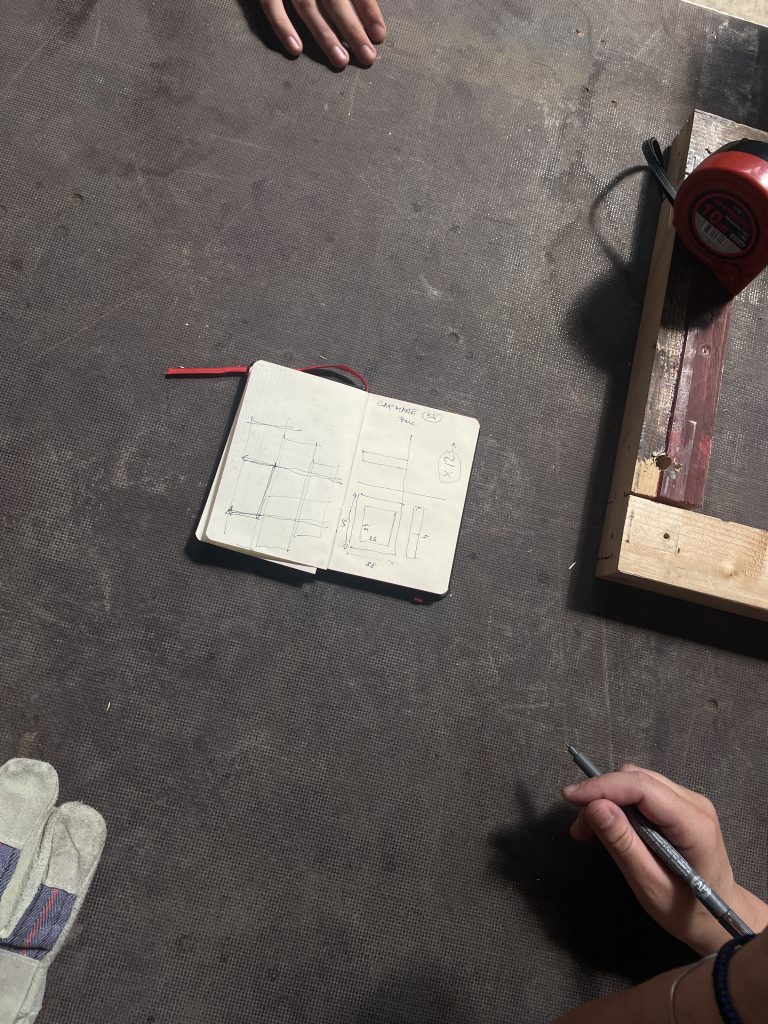
Gabi, Ilinca, Briana, Tavita, Cristi, and Horia take another tour of the warehouse, take another look at the salvaged components and seem to be already sketching them in their minds in new configurations. The machinists, in turn, measure with their eyes the remaining practicables for the day, which they will disassemble.
Another very warm day ending with a clear theme:
“by tomorrow, everyone comes up with an idea for what they want to do!”,
Gabi tells them.
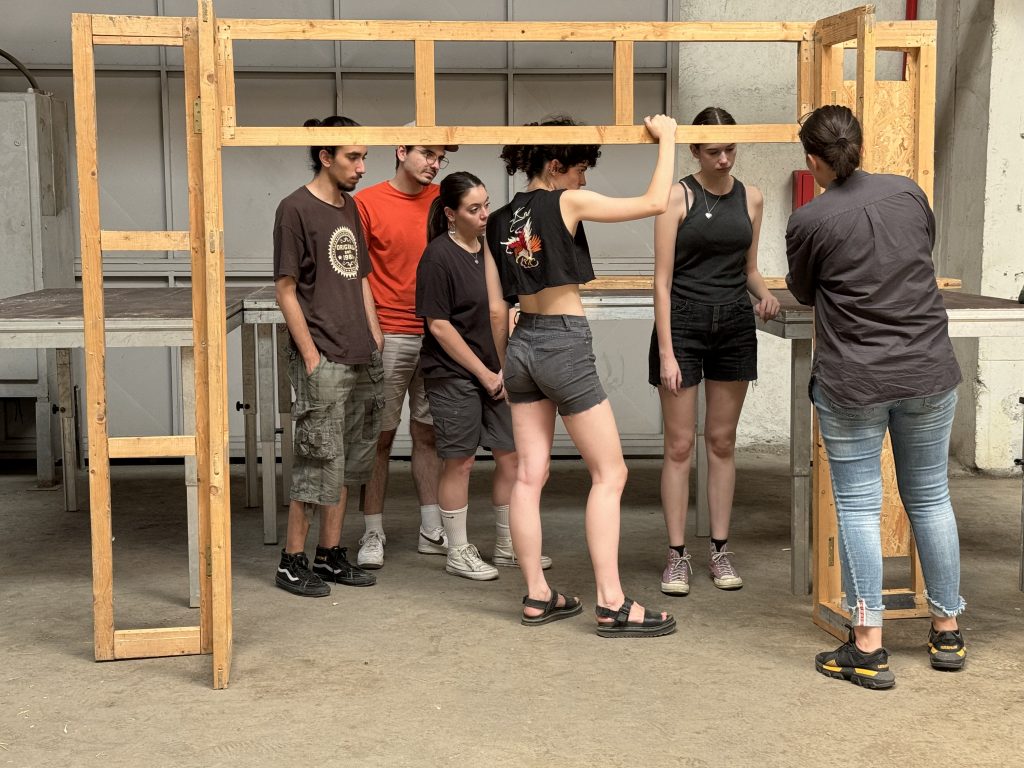
We all gather our things in the corner of the hall, move slowly to the cars and start back towards the theater.
These simple components will take on other forms, other roles; from work gloves, drills and hammers, set designers will move on to pencils, notebooks and design programs. I tell you in part two what happens in the design process!
See you soon,
Alina

0 comments on “From a practicable to a garden bench. Part I (by Alina Apostu)”